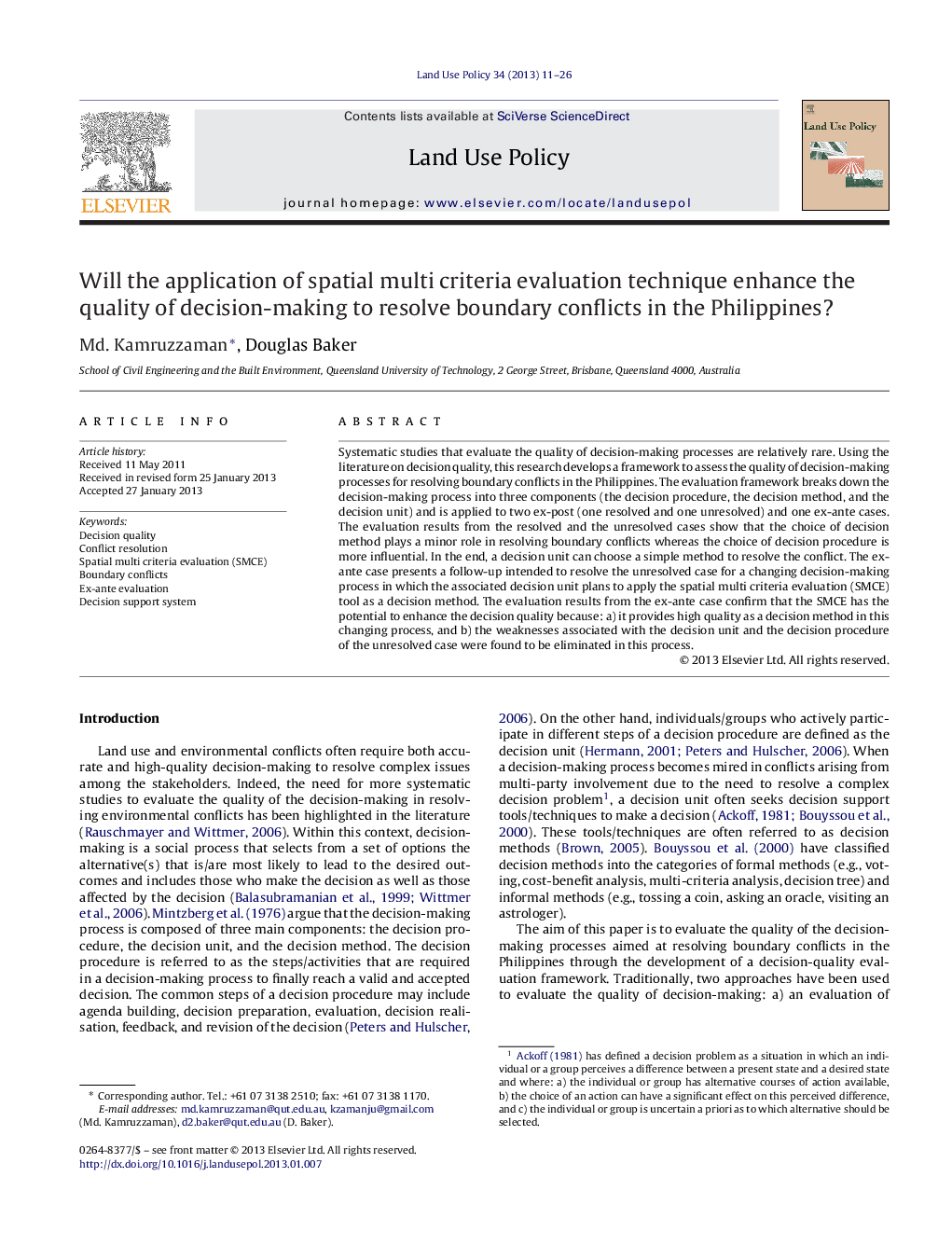| کد مقاله | کد نشریه | سال انتشار | مقاله انگلیسی | نسخه تمام متن |
|---|---|---|---|---|
| 93201 | 160117 | 2013 | 16 صفحه PDF | دانلود رایگان |
Systematic studies that evaluate the quality of decision-making processes are relatively rare. Using the literature on decision quality, this research develops a framework to assess the quality of decision-making processes for resolving boundary conflicts in the Philippines. The evaluation framework breaks down the decision-making process into three components (the decision procedure, the decision method, and the decision unit) and is applied to two ex-post (one resolved and one unresolved) and one ex-ante cases. The evaluation results from the resolved and the unresolved cases show that the choice of decision method plays a minor role in resolving boundary conflicts whereas the choice of decision procedure is more influential. In the end, a decision unit can choose a simple method to resolve the conflict. The ex-ante case presents a follow-up intended to resolve the unresolved case for a changing decision-making process in which the associated decision unit plans to apply the spatial multi criteria evaluation (SMCE) tool as a decision method. The evaluation results from the ex-ante case confirm that the SMCE has the potential to enhance the decision quality because: a) it provides high quality as a decision method in this changing process, and b) the weaknesses associated with the decision unit and the decision procedure of the unresolved case were found to be eliminated in this process.
► A framework is developed to evaluate the quality of the decision-making processes in resolving boundary conflicts in the Philippines.
► The application of the spatial multi-criteria evaluation (SMCE) technique is investigated to determine whether it enhances the quality of the decision-making processes.
► The choice of decision method was found to play a minor role in resolving boundary conflicts in the case studies; however, the choice of procedure was found to have a greater impact.
► A decision unit can choose a simple method to resolve the conflict in the end.
► The SMCE has the potential to enhance the quality of the decision-making process because the limitations associated with the procedure and the people involved were eliminated.
Journal: Land Use Policy - Volume 34, September 2013, Pages 11–26
